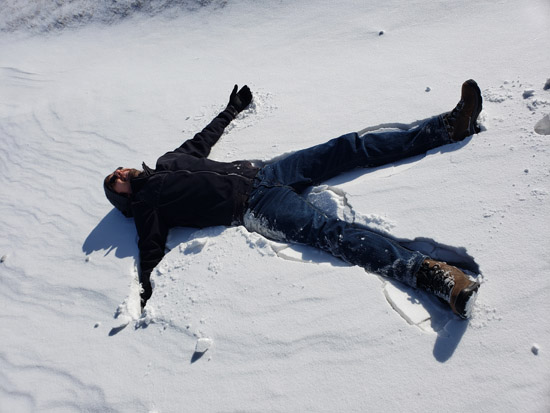
A Pacific storm is bringing areas of low elevation rain, moderate to heavy mountain snow, and high winds to the Northwest. Strong Santa Ana winds and very dry conditions are producing elevated to critical fire weather conditions in southern California. Isolated strong to severe thunderstorms are possible through early Wednesday morning across parts of northeast Texas into western Tennessee. Read More >
1. How did you become interested in meteorology?
As a child, I was terrified of thunderstorms. Over time, I gradually became intrigued by them. Growing up in middle Tennessee, I vividly recall the April 1998 Nashville tornado outbreak. During this event, I watched wall-to-wall coverage on local news stations and witnessed the role that meteorologists play in public safety. After that, I was hooked.
2. What led you to a career in the National Weather Service (NWS)?
By the time I finished my undergraduate education at the University of Oklahoma (OU), I knew that I wanted to work for the NWS. While completing my Ph.D. at North Carolina State University, I was selected as a Pathways Intern at the Raleigh, NC Weather Forecast Office. This was my first professional experience with the NWS after volunteering in Nashville and Raleigh previously.
3. What is it about the NWS that makes you want to work here?
I was initially drawn to the NWS after learning that NWS forecasters are responsible for issuing life-saving warnings during severe weather events. While I’ve since learned that the responsibilities consist of much more than just warnings, I continue to be driven by the role that I play in the chain from science to public safety on a day-to-day basis.
4. What advice do you have for someone who wants to become a meteorologist?
The skill set of a meteorologist is rapidly becoming increasingly diverse. Knowledge of math and science remains critical, but many other skills are needed depending on the subset of meteorology in which an individual is interested. For example, fluency in computer programming is essential for research, while communication skills and emergency management familiarity are important for NWS meteorologists.
5. How did you end up in Rapid City?
During my time in Raleigh, I reached a point in my Ph.D. research where I felt comfortable enough to finish remotely. After applying for meteorologist positions at several locations, I found an ideal fit at the Rapid City office. Having serendipitously visited the area a couple of weeks prior to my interview in the midst of a road trip, I knew I would enjoy living in the area.
6. What is the most memorable weather event you've experienced?
During my freshman year at OU, we had an ice storm at the beginning of finals week that I’ll always remember. This was the first time I had seen thunderstorms when the surface temperature was below freezing, causing all of the rain to freeze on contact. We ended up with over an inch of ice accumulation on everything, and most of the trees on campus were destroyed.
7. What are your interests outside of work?
Most of my time outside of work is dedicated to music, traveling, and hiking (when the weather allows!). I’m also a big football fan.
8. Where do you see yourself in ten years?
I hope to still be working for the NWS somewhere, ideally as a Science and Operations Officer. This position would allow me to pursue interests in both forecasting and research.